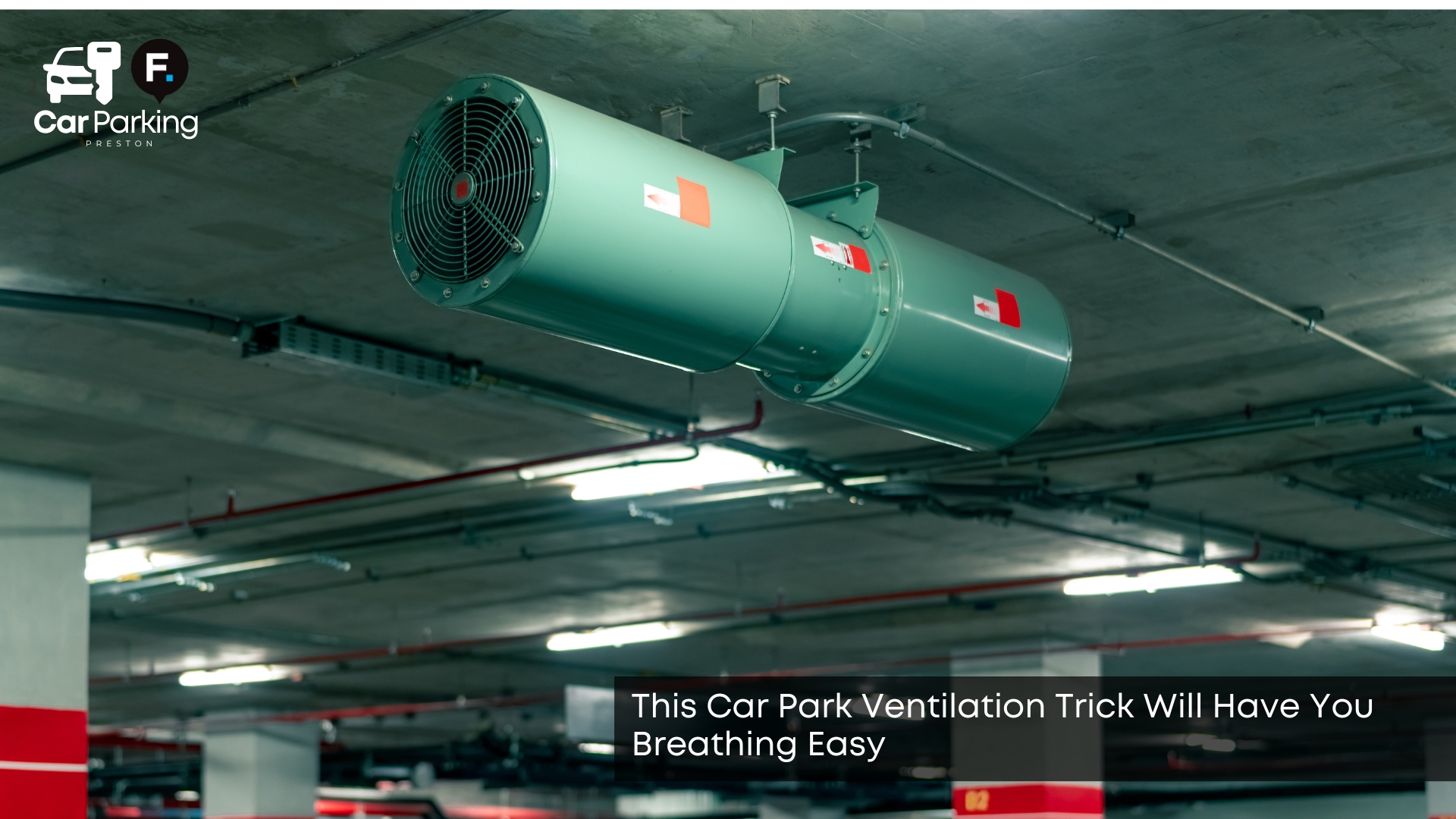When you drive into an underground or enclosed car park, the last thing on your mind might be the air you’re breathing. But the build-up of fumes, dust, and stale air can quickly turn a simple parking visit into an unhealthy experience. The good news is that many car parks now rely on a simple but clever trick to keep the air fresh and safe. Let’s explore why this matters more than you think, and how this smart trick works behind the scenes.
Why Does Ventilation Matter in Enclosed Car Parks?
Ventilation matters in enclosed car parks because it removes harmful exhaust fumes and helps maintain breathable air. Without proper airflow, car parks can quickly fill with carbon monoxide and other pollutants. This is especially true in underground or multi-level car parks where natural air circulation is limited. Good ventilation ensures that these gases are constantly pushed out and replaced with cleaner air. This basic principle keeps air quality at a safe level throughout the day.
What Health Risks Come from Poor Air Circulation?
Poor air circulation in car parks can lead to headaches, dizziness, eye irritation, and in serious cases, carbon monoxide poisoning. These health risks increase when multiple vehicles are operating simultaneously, especially in confined or enclosed areas. People with asthma or breathing conditions are particularly at risk. Even short exposure can cause discomfort for some drivers and passengers. These issues highlight why better ventilation is more than just a convenience.
Are There Legal Requirements for Car Park Ventilation?
Yes, there are legal requirements in the UK for car park ventilation systems, especially for underground or partially enclosed facilities. Building regulations require that car parks have systems to keep carbon monoxide levels below safe limits. This can include mechanical ventilation with sensors and timed controls. Regulations also cover airflow rates and emergency ventilation in the event of a fire. Meeting these rules is essential for the safety of all users.
What’s the Simple Trick That Improves Air Quality Fast?
The simple trick is the use of automatic ventilation fans that respond to gas levels in real-time. These smart fans detect when exhaust fumes accumulate and automatically switch on to clear the air. Some systems operate on timers, while others utilize CO sensors to activate only when necessary. This targeted use saves energy and keeps the air clean, eliminating the need for constant fan noise. It’s a behind-the-scenes feature that drivers often don’t notice, but it makes a big difference.
How Do Ventilation Systems Work in Modern Car Parks?
Modern car park ventilation systems utilize a combination of extractor fans, supply fans, and carbon monoxide sensors to monitor and replenish the air. Air is drawn out through vents while clean air is pulled in to replace it. The system runs quietly and efficiently, often mounted on the ceiling or in the corners of the structure. These systems operate continuously or in bursts depending on air quality. The result is fresher air that improves safety and comfort.
Can You Tell If a Car Park Has Proper Airflow?
Yes, you can often tell if a car park has proper airflow by how it smells, how quickly fumes disperse, and the presence of visible ventilation units. A clean-smelling car park with no foggy air is a good sign. If you hear fans running or see wall-mounted vents, the system is likely active. On the other hand, stale or petrol-scented air may suggest poor ventilation. Spotting the signs early helps you decide whether to park or look for an alternative space, especially when investing in car parks with modern ventilation is part of your long-term strateg
Are Some Car Parks Safer Than Others for People with Breathing Issues?
Yes, open-air or well-ventilated car parks are generally safer for individuals with breathing conditions, such as asthma. Car parks with clear roof vents or outdoor layouts allow natural airflow to prevent fumes from accumulating. Those with advanced ventilation systems and real-time gas monitors offer even better protection. It’s worth checking car park reviews or using trusted locations like those listed under where to park safely in Preston if you’re sensitive to air quality. Picking the right space can make a big difference in how you feel.
How Does Good Ventilation Support Car Park Safety Overall?
Good ventilation supports car park safety by improving visibility, reducing health risks, and lowering the chance of gas build-up during traffic peaks. Clean air makes it easier to spot pedestrians, signs, and markings. It also reduces stress, especially for drivers stuck in queues. In emergencies like a fire or gas leak, a strong ventilation system helps keep escape routes safer. It’s one of those features that silently works to protect every driver, especially if you’re using a Preston car park guide for smarter choices when picking your location.
What to Look for Next Time You Enter an Underground Car Park
Next time you enter an underground car park, look for visible vents, fresh airflow, and proper lighting; these are signs of a well-maintained ventilation system. If the space feels stuffy or the air smells thick, it might be worth moving on. Remember, safety and comfort go hand in hand when choosing a parking space. Knowing what to look out for ensures your visit is easy and worry-free from the moment you arrive.


Leave a Reply